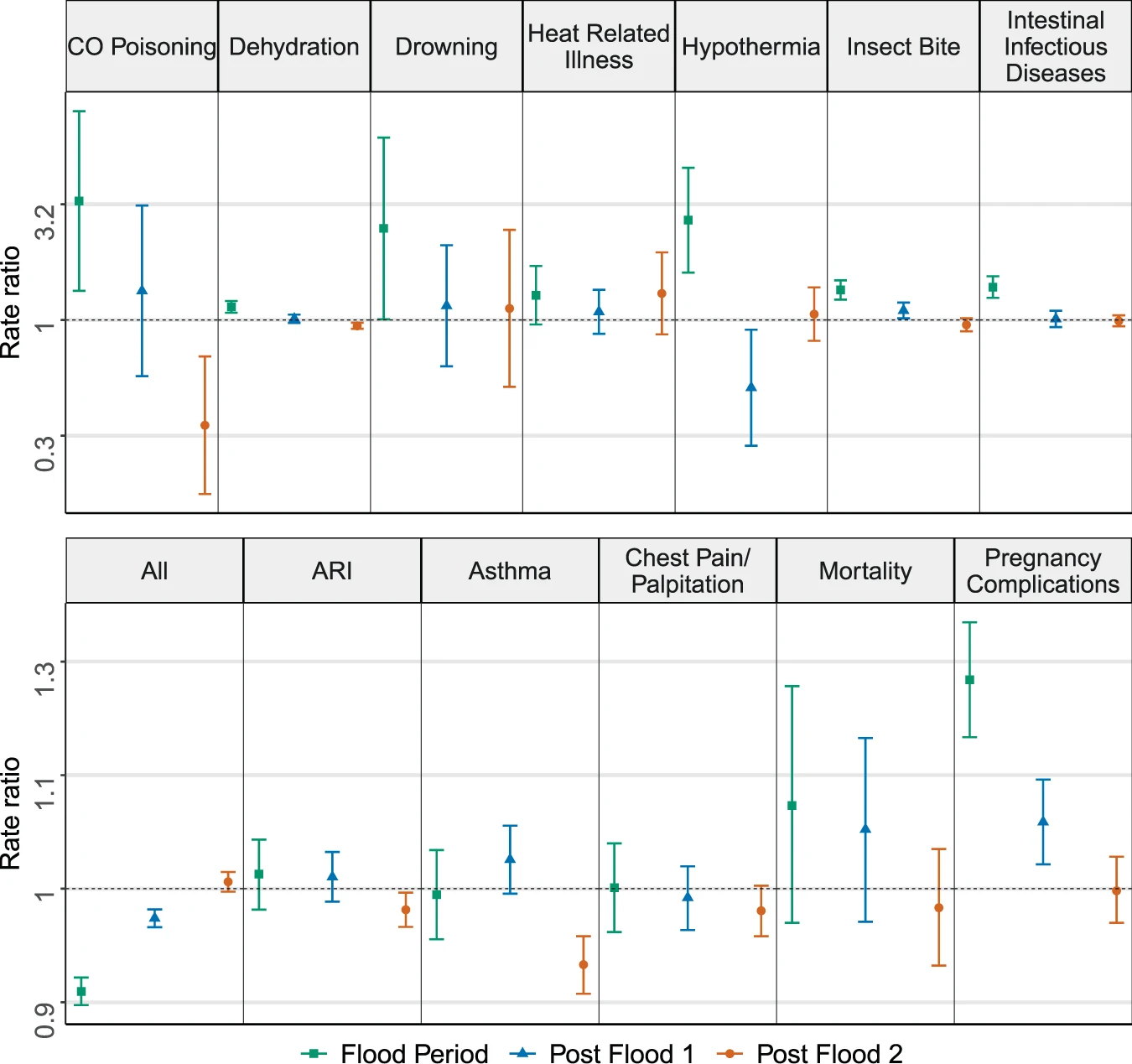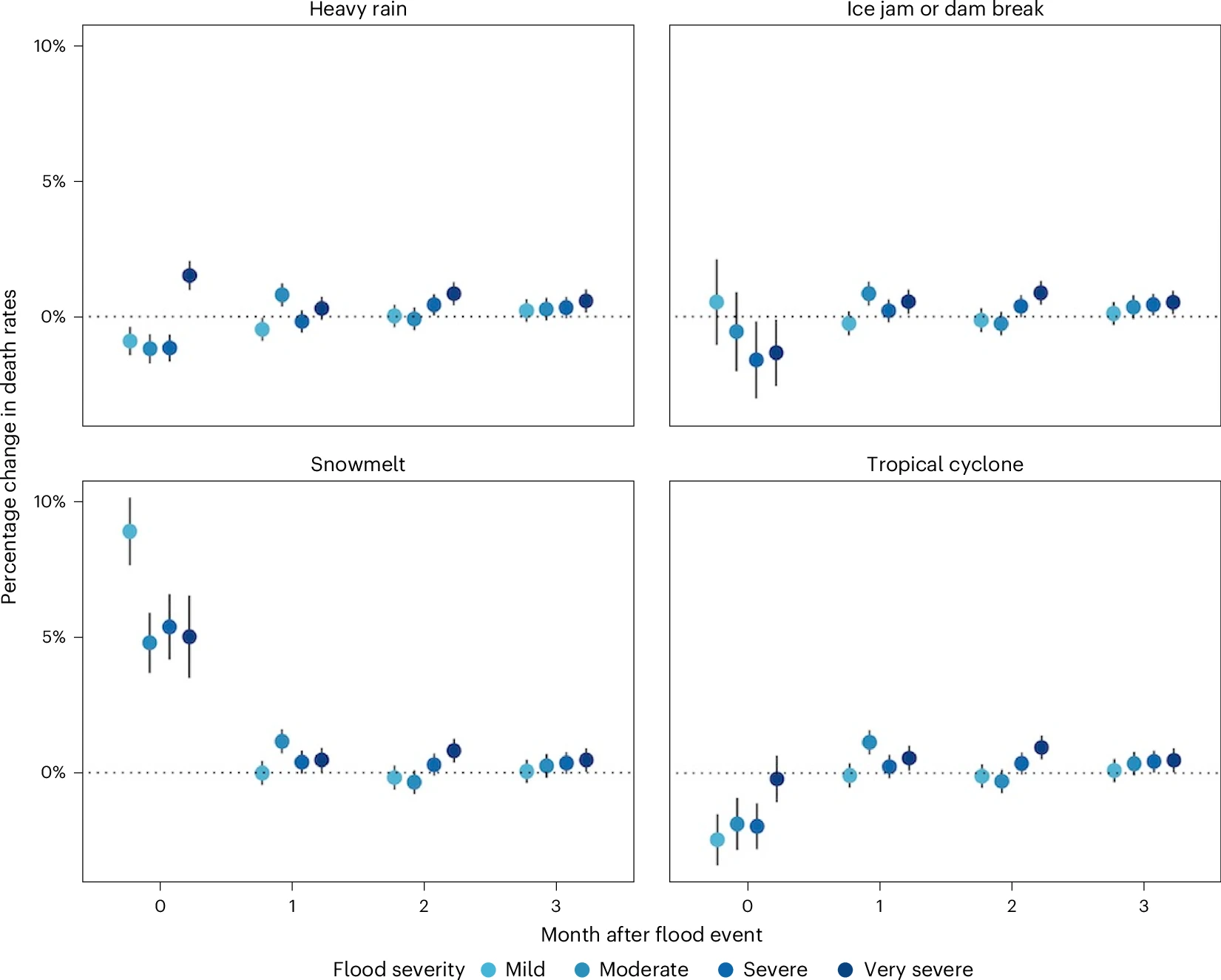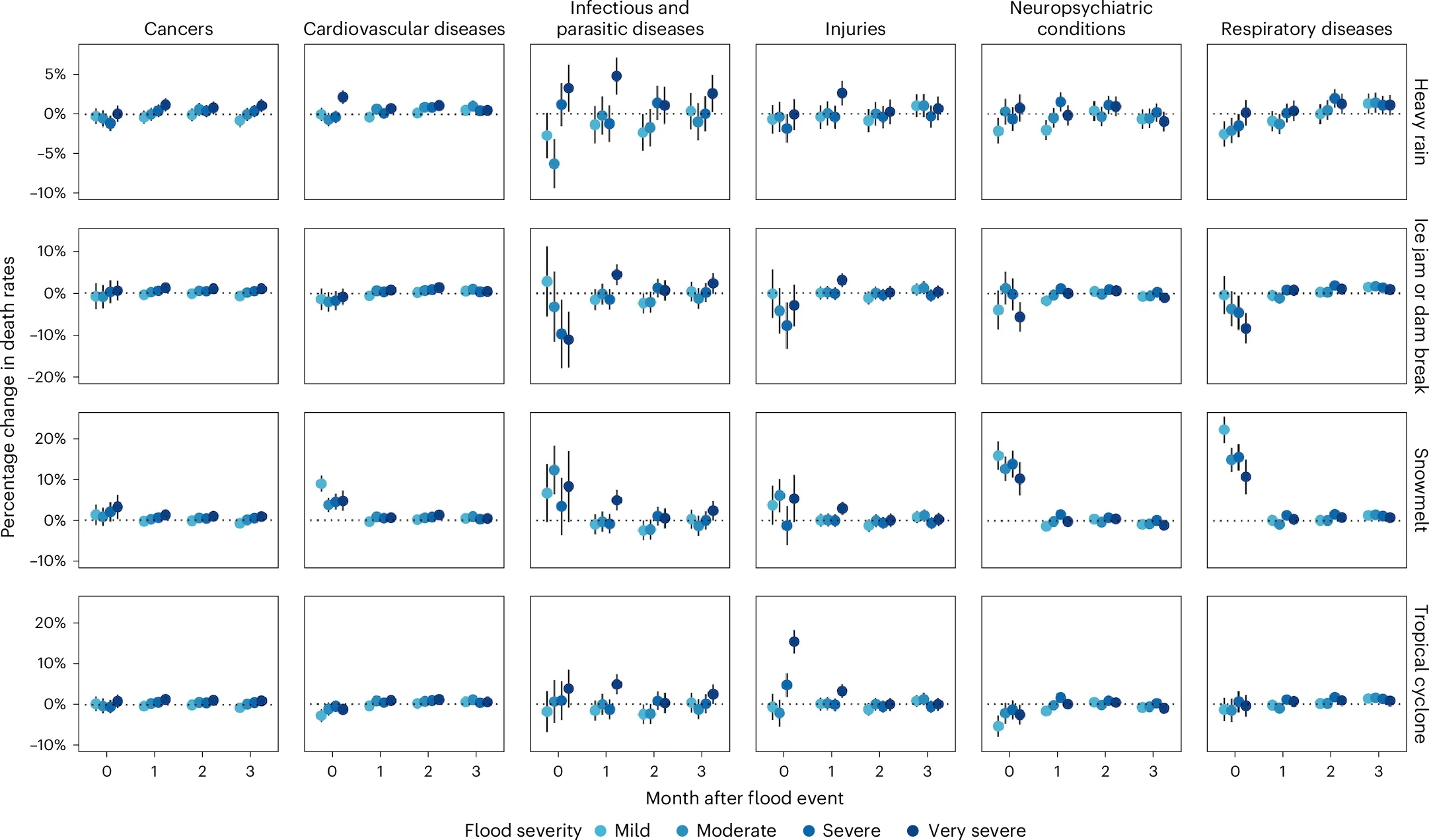In this paper, the authors used CHIRPS as an environmental variable and Demographic and Health Survey (DHS) cross-sectional data to investigate the acute respiratory infection with rainfall. However, no significant relation between the two was found except for Nigeria. The authors speculate that “Major flooding due to extreme rainfall reported across Nigeria in August 2018 resulted in large-scale population displacement. Indeed, the period of this event overlapped with the period from which DHS data in Nigeria were obtained. Flooding can increase respiratory fungal or polymicrobial infections by increasing inhalational exposure to these microorganisms under wet and humid conditions. 5 In some cases, increased transmission of ARI can occur from overcrowding in shelters after disasters”

Flood and health risk
The Human Impact of Floods: a Historical Review of Events 1980-2009 and Systematic Literature Review
This is a literature review of health impact of floods, particularly on injuries and deaths.
Health Risks of Flood Disasters
This article discuessed potential health risks aftermath of a flood event. It mentioned the time lag between flood event and those diseases.
Immediate
Drowning
Trauma
Hypothermia
Electrocution
Carbon monoxide poisoning
Early (<10 d after event)
Cutaneous infection
Aspiration pneumonitis/pneumonia
Viral respiratory infections
Gastroenteritis
Late (>10 d after event)
Leptospirosis
Mosquito-borne illnesses
Cutaneous infection from atypical organisms (fungi, mycobacteria)
Hepatitis A or E virus infection
Mental health disorders, including posttraumatic stress disorder and depression
Management of chronic disease
Climate-sensitive disease outbreaks in the aftermath of extreme climatic events: A scoping review
This article comprehensively discussed infectious diseases outbreak associated with climate extremes such as flooding. They articulated the conditions that are conducive for disease outbreak.
In the multivariable models, increased number of new cases of acute hepatitis A, acute hepatitis E, dengue, malaria, measles, meningitis, typhoid and paratyphoid, tuberculosis, and upper respiratory infections were significantly correlated with the longer duration of floods (all p < 0.05). Increased lasting days of flooding were associated with increased number of deaths from lower respiratory tract infections (0.173%), measles (0.126%), typhoid and paratyphoid (0.043%), tetanus (0.245%), and tuberculosis (0.154%, all p < 0.05).
This article, the authors used emergency visit data to explore the relation between floods and health records. Some boosted numbers of diseases / injuries are shown below.

Large floods drive changes in cause-specific mortality in the United States Nat. Med.
This study investigates flood caused cause-specific mortality and stratified by age, gender, etc. They divide flood into different types such as heavy rainfall, snowmelt, hurricane, etc and examine the flood severity change on mortalities.

Flooding exposure was associated with mortality risks for cardiovascular disease, respiratory disease, and mental disorders.

Flood-GI diseases
It is a county-specific study looking at how flood cause GI-related diseases in Massachusetts.